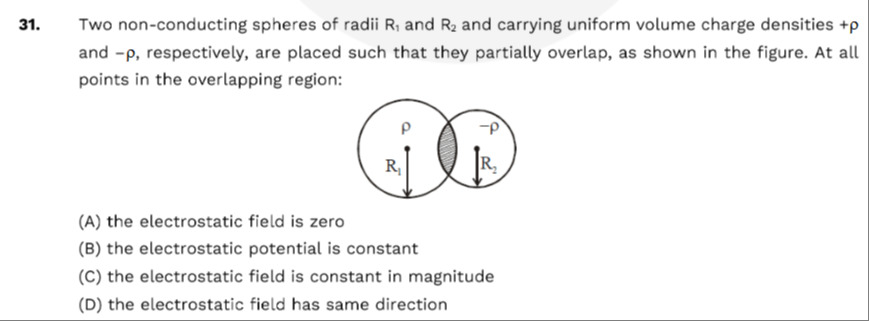Question
Question: Two non-conducting spheres of radii R₁ and R₂ and carrying uniform volume charge densities +$\rho$ a...
Two non-conducting spheres of radii R₁ and R₂ and carrying uniform volume charge densities +ρ and -ρ, respectively, are placed such that they partially overlap, as shown in the figure. At all points in the overlapping region:

the electrostatic field is zero
the electrostatic potential is constant
the electrostatic field is constant in magnitude
the electrostatic field has same direction
C and D
Solution
Let the centers of the two spheres be C1 and C2 with separation vector
d=C2−C1.
For a uniformly charged non-conducting sphere (with volume charge density ρ), the electric field at an internal point (at a vector distance r from its center) is
E=3ε0ρr.
For a point P in the overlapping region, let r1=P−C1 relative to the positive sphere and r2=P−C2 relative to the negative sphere. Thus, the net electric field at P is
EP=3ε0ρr1−3ε0ρr2=3ε0ρ(r1−r2).
Notice that
r1−r2=(P−C1)−(P−C2)=C2−C1=d,
which is independent of the choice of P in the overlapping region. Thus,
EP=3ε0ρd,
a constant vector having both constant magnitude and constant direction throughout the overlapping region.
